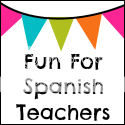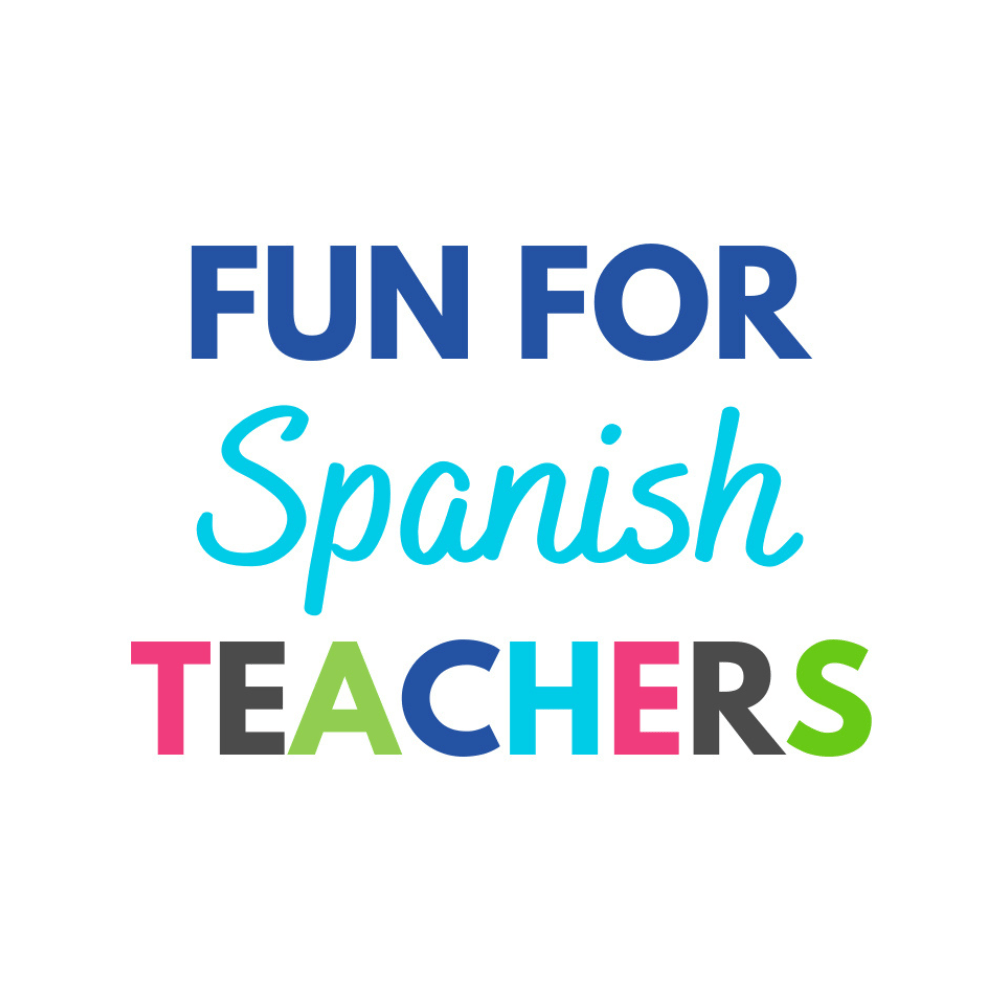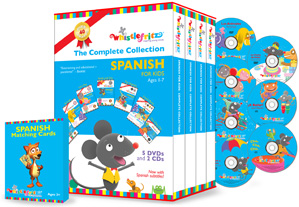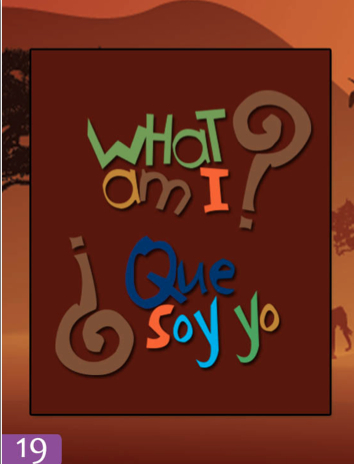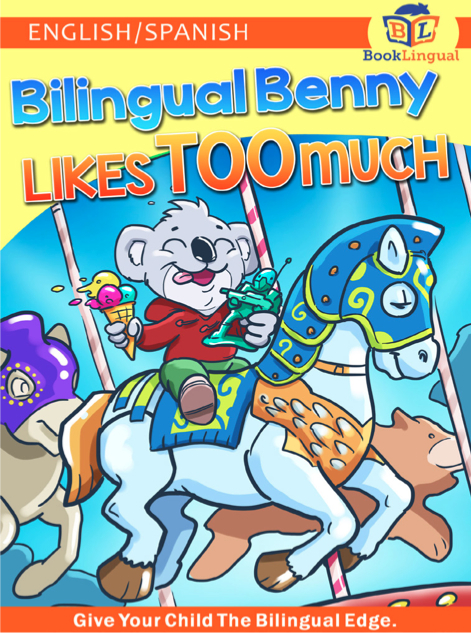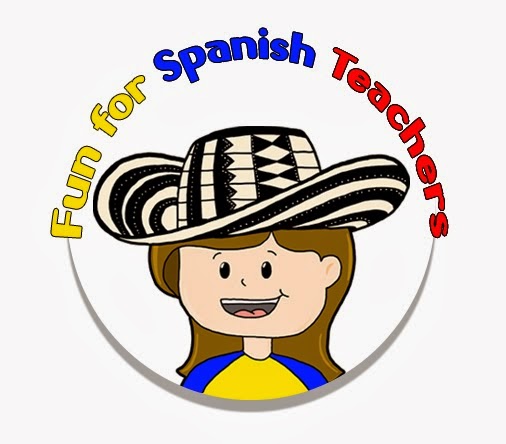Whistlefritz is an award winning series of music CD’s and DVD’s designed for teaching Spanish to young learners. In this set, created especially for Pre-K and Elementary Spanish classes, you can find just about every kind of lesson you can imagine! The collection includes five DVD’s and two music CD’s. It includes 40 lessons that will engage your students and will provide continuity for their learning process. Every lesson has been well planned and is supported by a song or episode on the DVD. The guide book is easy to use for new or experienced teachers, and it’s also very accessible for parents. You can find worksheets that support the lessons, as well as simple art activities that won’t take long, which is perfect for young learners. Flashcards to color, and games are also included. The activities can be done during class or sent home to extend learning.
The collection also includes a set of matching cards with a very pleasant wolf named Rito. Rito always seems happy, really enjoying the fact that everyone is learning Spanish.
Each lesson has been created to take 30 to 40 minutes to explore, but you can definitely extend each one according to the pace of your students and engagement in the lesson. There is no need to follow the lessons in the exact order presented in the book.
The Lessons
You will find in each lesson:
1. Brief description of the lesson
2. A simple and clear goal for the lesson
3. Objectives and more specifics
4. A list of the vocabulary
5. Suggested materials for the lesson
6. Time
7. Suggested activities
- Main focus of the lesson and review
- A list of teachers’ input
- Guided practice as a whole class
- Independent practice, a great opportunity to assess students
- Closure
8. Extension activities: These can be done during the class, as a closure activity or at home. Children get to watch an episode of the suggested DVD and learn a song.
The DVD’s
The set includes five DVD’s where children will meet Whistlefritz, a cute and friendly little mouse that shows up in the episodes. The children will meet Maria, a teacher with a sweet voice who will guide them in this adventure. Children of different ages are seen in the episodes, and the best thing is that there is no translations! The DVD’s are only in Spanish, but the language used is simple and the situations are easy to understand because they are presented in a clear context. There is no need to translate them!
The Music CD’s
Songs are performed by Jorge Anaya, a native of El Salvador who has clearly added a lot of nice Latino flavor to the songs. The songs are in Spanish and are simple and catchy. They support each unit, and the videos for each song are found on the DVD’s.
Who wouldn’t love having a little mouse as a helper in Spanish class? Whistlefritz will make sure everyone learns Spanish the fun way! Visit Whistlefritz’s website to learn more about the complete collection or the Facebook page to stay tuned!
The Giveaway!
If you would like this little mouse called Whistlefritz to join you in your classroom next year, here is an opportunity to have one of these DVD’s. Just enter below to participate. The winner will be announced on July 18th, 2013. United States only.
